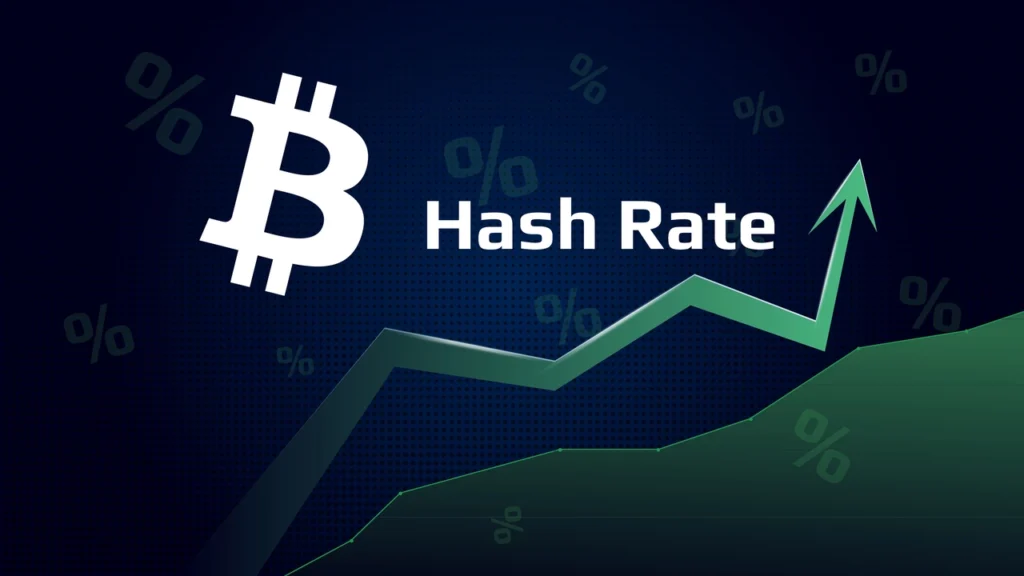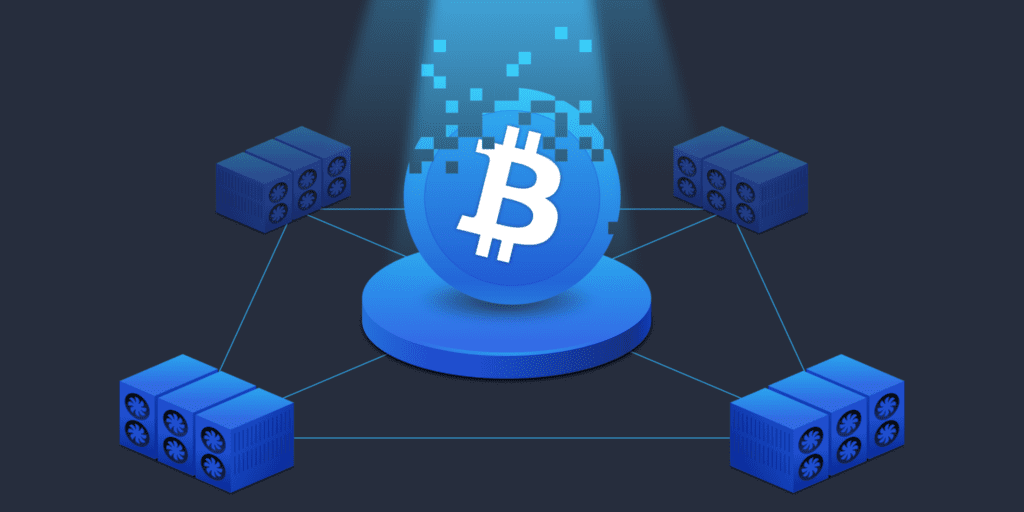Hash rate refers to the amount of computational power that is being used to mine new Bitcoin blocks. It is a measure of how much work is being done to secure the Bitcoin network. The higher the hash rate, the more secure the network is considered to be.

The impact of hash rate on Bitcoin’s future is significant. A higher hash rate means that it is more difficult for an attacker to successfully launch a 51% attack on the network. This is because a 51% attack requires the attacker to control more than half of the total hash rate of the network.
Additionally, a higher hash rate means that there is more competition among miners to mine new Bitcoin blocks. This competition helps to ensure that new blocks are added to the blockchain at a consistent rate, which helps to maintain the stability of the network.
However, a higher hash rate also means that it is more difficult for individual miners to mine new Bitcoin blocks. This is because the difficulty of mining Bitcoin is adjusted automatically based on the hash rate of the network. As more miners join the network and the hash rate increases, the difficulty of mining Bitcoin also increases.
What is Bitcoin’s hash rate?

Bitcoin’s hash rate is a measure of the computational power being used to mine new Bitcoin blocks. It represents the number of hash calculations that can be performed by the Bitcoin network in one second.
As of April 27, 2023, the Bitcoin hash rate is approximately 160 exahashes per second (EH/s). This means that the Bitcoin network is capable of performing 160 quintillion hash calculations per second. The hash rate has grown significantly over the years as more miners have joined the network and as mining technology has improved.
The high hash rate of Bitcoin is one of the factors that make the network so secure. It would require an enormous amount of computational power to launch a successful 51% attack on the network, making it extremely difficult and expensive for any individual or group to do so. The high hash rate also ensures that new Bitcoin blocks are added to the blockchain at a consistent rate, helping to maintain the stability of the network.
Why is hash rate important?
Hash rate is an important metric in the world of cryptocurrency, particularly for blockchain networks that use proof-of-work (PoW) consensus algorithms, such as Bitcoin. Here are some reasons why hash rate is important:
- Security: A high hash rate makes the network more secure by making it more difficult for attackers to launch a 51% attack, which would require them to control the majority of the network’s hash rate.
- Network stability: The hash rate plays a critical role in maintaining the stability of the network. It determines how quickly new blocks are mined, and a consistent block time helps to ensure that the network remains reliable and predictable.
- Mining difficulty: The mining difficulty adjusts automatically based on the network’s hash rate. As the hash rate increases, so does the difficulty, making it more challenging for individual miners to mine new blocks. This helps to prevent the network from becoming centralized and encourages more miners to join the network.
- Market sentiment: The hash rate can be seen as a measure of the health of a blockchain network. A high hash rate indicates that miners are investing significant resources into securing the network, which can be seen as a positive indicator of market sentiment.
The hash rate is an important metric in the world of cryptocurrency because it provides insight into the security, stability, and health of a blockchain network.
How does Bitcoin’s hash rate work?

Bitcoin’s hash rate is a measure of the computational power being used to mine new BTC blocks. When a miner attempts to add a new block to the Bitcoin blockchain, they are essentially trying to solve a complex mathematical puzzle. The first miner to solve the puzzle is rewarded with newly minted Bitcoin and transaction fees.
The hash rate represents the number of hash calculations that can be performed by the BTC network in one second. Each hash calculation is a mathematical algorithm that takes the data from the previous block, along with a random number called a “nonce,” and produces a hash output. The goal is to produce a hash output that meets a specific target value that is set by the Bitcoin protocol.
The difficulty of the mining puzzle is adjusted automatically every 2,016 blocks, or roughly every two weeks, based on the total hash rate of the network. If the hash rate increases, the difficulty of the mining puzzle also increases, making it more difficult for miners to solve the puzzle and earn the Bitcoin reward.
The hash rate is important because it determines the security and stability of the BTC network. A high hash rate makes the network more secure by making it more difficult for attackers to launch a 51% attack, which would require them to control the majority of the network’s hash rate. It also ensures that new BTC blocks are added to the blockchain at a consistent rate, helping to maintain the stability of the network.
The hash rate is a measure of the computational power being used to mine new BTC blocks. It plays a critical role in the security and stability of the Bitcoin network and is adjusted automatically based on the total hash rate of the network.
How does the hash rate affect Bitcoin price?
The hash rate of the Bitcoin network is one of many factors that can potentially influence the price of BTC, but it is not a direct cause-and-effect relationship. Here are a few ways in which the hash rate can indirectly impact the price of BTC:
- Network security: A high hash rate generally makes the BTC network more secure, which can increase investor confidence and lead to higher demand for Bitcoin, potentially driving up the price.
- Mining profitability: The mining profitability of Bitcoin depends on the hash rate and the difficulty of the mining puzzle. As the hash rate increases, the difficulty also increases, making it more challenging for miners to mine new BTC blocks. This can reduce mining profitability, which could potentially reduce the supply of new Bitcoin being introduced into the market and drive up the price.
- Market sentiment: A high hash rate can be seen as a positive indicator of market sentiment, as it indicates that miners are investing significant resources into securing the network. This could lead to increased investor confidence and higher demand for Bitcoin, potentially driving up the price.
However, it is important to note that the price of BTC is influenced by a wide range of factors, including market sentiment, adoption rates, regulatory developments, and macroeconomic factors. While the hash rate can indirectly impact the price of BTC, it is just one of many factors that can influence the market.
DISCLAIMER: The Information on this website is provided as general market commentary and does not constitute investment advice. We encourage you to do your own research before investing.
Join us to keep track of news: https://linktr.ee/coincu
Annie
Coincu News






















